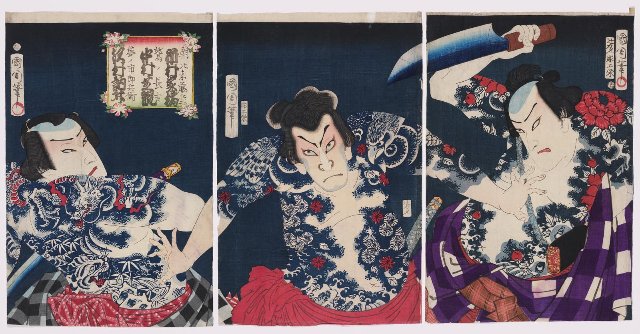Tattoos in Japanese Prints
Museum of Fine Arts Exhibition November 20 to February 20
By: MFA - Sep 28, 2021
|
Some of the world’s most popular tattoo motifs trace back to early 19th-century Edo (modern Tokyo), where tattoo artists took inspiration from color woodblock prints known as ukiyo-e. Today, the global popularity of tattoos has brought renewed attention to the centuries-old Japanese tradition. Drawn from the MFA’s renowned collection of Japanese art, Tattoos in Japanese Prints looks closely at the social background, iconography and visual splendor of tattoos through the printed media that helped carry them from the streets of Edo-period Japan to 21st-century tattoo shops all over the world. The exhibition features nearly 80 works by Utagawa Kuniyoshi (1797–1861) and his contemporaries—including his colleague and rival Utagawa Kunisada (1786–1864) and his pupil Tsukioka Yoshitoshi (1839–1892). Among the highlights are a selection of prints from Kuniyoshi’s best-selling series One Hundred and Eight Heroes of the Popular Water Margin (about 1827–30). Oral traditions among contemporary tattoo artists credit these works, based on a Chinese tale of a band of 108 heroic outlaws fighting corrupt officials, for giving rise to a new fashion of extensive pictorial tattoos. Kuniyoshi created spectacular original designs for the heroes, adorning their bodies with fearsome lions, coiling snakes, lush peonies, supernatural beings and dragons of various kinds. Exploring the Japanese tattoo’s evolving meanings, from declarations of religious or romantic devotion to symbols punishment and even crime, Tattoos in Japanese Prints presents a fascinating history of a tradition that continues to influence artists and enthusiasts today. The exhibition is accompanied by an illustrated catalogue produced by MFA Publications, featuring a comprehensive essay by Sarah E. Thompson, Curator of Japanese Art, and detailed entries of nearly 50 artworks. |

